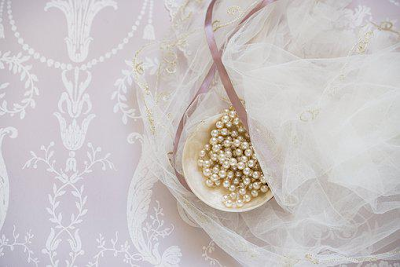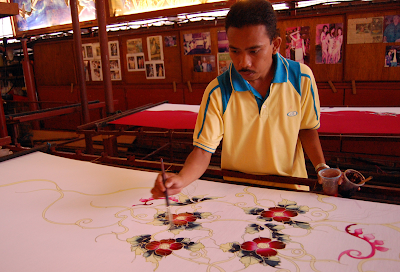Featured
- Get link
- X
- Other Apps
What Is An Academic Dress?
The ceremonial clothing worn by students and authorities during a commencement or graduation ceremony is known as academic dress.
The most popular designs are modeled by the daily clothes worn by academics in the eleventh and twelfth centuries at the earliest institutions.
- The traditional outfit consisted of a flowing gown, a hood or cloak, and some kind of headwear; the modern form of this ensemble is determined by the regulations imposed by the institution with which the student or official is affiliated.
History and Origin.
In the late eleventh and early twelve centuries, the ancient universities of Italy and France were founded, with the University of Oxford following in about 1115 and Cambridge following in circa 1209.
These two English institutions established the academic clothing tradition by setting rigorous rules for its students and administrators; the British Empire's subsequent impact extended this custom to many areas of the globe.
Historically, institutions of higher learning were referred to as stadium generale or universitas, with the latter being the greater distinction bestowed by the Pope of the time.
The parallels between academic attire and church robes reflect this early religious connection.
However, early schools were often scholastic guilds made up of students and instructors structured around a cathedral or monastery, rather than religious organizations.
The academics wore clothing that were a sober reflection of ordinary trends, but they were not always priests.
In this case, it was the degree, not the robe, that indicated the scholar's complete participation in the learned organization.
The word "bachelor" was originally used to designate a small landowner's helper; an apprentice as opposed to a master who was already skilled, thus the academic usage of the term "master." During the thirteenth century, both of these titles were often used at universities.
As a result, there existed a structure inside these organizations that was unique to the scholar's level of knowledge.
This order, coupled with the medieval clothing style, formed the foundation for academic attire.
The Gown and Cap.
A flowing gown, known as a cappa clausa, was worn with a cape or cloak thrown over the top.
Like a hooded cloak or capitium, it featured a cowl-like appendage that could be pulled over the head.
The trend had evolved toward an open gown by the second part of the fifteenth century, which was believed to be a symbol of the increasing embrace of academic study and the arts.
The hooded cloak became more decorative than functional around 1490, and the gown became standard academic attire.
Bachelors and masters students often wore black robes made of "princes stuff" or "crape," with the older man's garment having larger sleeves to allow for mobility while instructing.
To indicate the scholar's faculty or social position, the dress hood took the shape of a drooping cloak lined with silk or fur.
In 1432, Oxford prohibited the use of miniver for everyone except Masters of the Arts and those of considerable wealth or noble origin.
Academics followed professionals and the clergy in wearing hats by the sixteenth century, with variations in sleeve design and lining mirroring popular attire.
The origins of the academic hat are unknown, although it is believed to have developed from a combination of the ecclesiastical pileus cap and the medieval head scarf.
The pileus quadratus, often known as the Oxford mortarboard, is worn by the majority of modern graduates.
This hat is made out of a tiny skullcap that is molded to suit the wearer's head and a flat, square top with a silk tassel.
After the Restoration, it was believed that accentuating "squareness" indicated more devotion, and this style of headgear became fashionable among the clergy.
The current academic shape, however, did not become popular until the seventeenth century, when the square was stiffened with wood or card.
A variant of the Tudor Bonnet, a softer, broader hat, or, if of Scottish provenance, the John Knox cap, may be worn by certain philosophical or secular physicians.
Academic Dress in the 21st Century.
The Oxford or Cambridge bachelor of arts gown is worn by the majority of modern graduates.
The Cambridge gown is knee-length, "princes stuff," and features pointed, open sleeves: the forearm seam is unsewn from the cuff, enabling the arm to slip through freely.
Part of the hood is lined with white fur or silk that is dyed to indicate the wearer's degree.
The sleeveless Oxford "commoners" gown falls just below the knee and must be worn with lay garments that follow a rigorous code.
The hood's lining is also suitable for status.
Hugh Smith's Academic Clothing and Insignia of the World (1970) is a comprehensive resource for anybody interested in all aspects of dress.
Most colleges in the United States recognize the Inter-Collegiate Code (1895) of academic clothing, which is a variant on the Cambridge style but with a complex color coding system that indicates both the degree and the institution.
Students in many other nations do not wear academic attire: in Germany, it is regarded as a show of respect for Martin Luther's teachings; in the former Soviet Union, students get medals; and in Finland, physicians don swords during their graduation.
Native Americans have added native jewelry and headwear, New Zealand Maoris use feathered capes, and Australian Aborigines wear red, yellow, and black capes, among many other modifications to the English form.
Academic attire is unquestionably ideal for rebellion since it gives respect to the establishment and tradition.
High School Dress in the United States.
The cap and gown was first used in American high schools in 1911 as a way to provide a cost-effective and equitable dress code.
To create an official outfit for the high school graduation, American educators collaborated with academic clothing makers.
With long, pointed sleeves and the Oxford mortarboard hat, it was gray.
James Armstrong, the administrator of Englewood High School in Chicago, was one among many who advocated for such clothing in schools.
He thought that adopting academic clothing would relieve parents of the pressure of providing stylish and costly graduation attire.
Traditional gray had been replaced by the official colors of the individual school by the early 2000s, with religious or private girls' schools choosing white and grammar schools choosing maroon.
Many organizations throughout America have embraced the cap and gown, with even nursery schools bestowing accolades on its baby graduates.
Although this technique has not been extensively embraced outside of the United States, it has been implemented by certain schools in Australia and Asia.
Academic clothing incorporates medieval fashion as a historical record, maintaining its character and shape for what is a significant contemporary event, both to the graduates and to those who have supported them throughout their academic careers.
As a result, this kind of clothing is rooted in history while yet being extremely different from ordinary attire—such a contrast plainly communicates great accomplishment.
Find Jai on Twitter | LinkedIn | Instagram
- Get link
- X
- Other Apps














